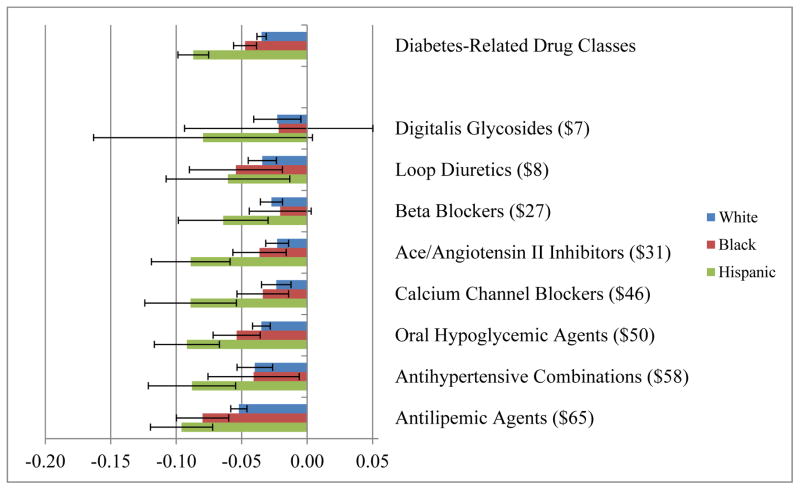Figure 3.
Regression Adjusted Difference-in-Difference in Medication Use (MPR), by Therapeutic Class and Race for the Near-Poor Population
MPR refers to the Medication Possession Ratio, which is the fraction of days that a patient “possesses” or has access to medication, as measured by prescription fills. Changes are based on results from multivariate models which control for age, age-squared, gender, comorbid conditions, and socioeconomic status. Prices shown reflect the average price paid in the sample for a 30-day supply of medication in the therapeutic class. ACE inhibitors and ARBs are combined into a single class because they are commonly considered therapeutically interchangeable. We defined the “near-poor” as white, black and Hispanics beneficiaries residing in zip codes with a median household income below $25,000 (the bottom quartile of the sample’s income distribution). Whites who received the low-income subsidy (LIS): n=74,452; Whites who did not receive the low-income subsidy (non-LIS): n=115,333; LIS blacks: n=26,140; Non-LIS blacks: n=6,131; LIS Hispanics: n=29,113; Non-LIS Hispanics: n=4,311

